There are many situations when you may want to clone your pepper plants. If you had a particularly successful harvest, or a highly disease-resistant plant, propagating that plant is a great idea.
By propagating peppers, you are preserving the genetics of the parent plant. Alternatively, saving seeds from your plant’s peppers and growing them out leads to genetic variation.
In this article, I’ll show you how to clone peppers from start to finish. The process is simple, but does take a long time, so plan accordingly!
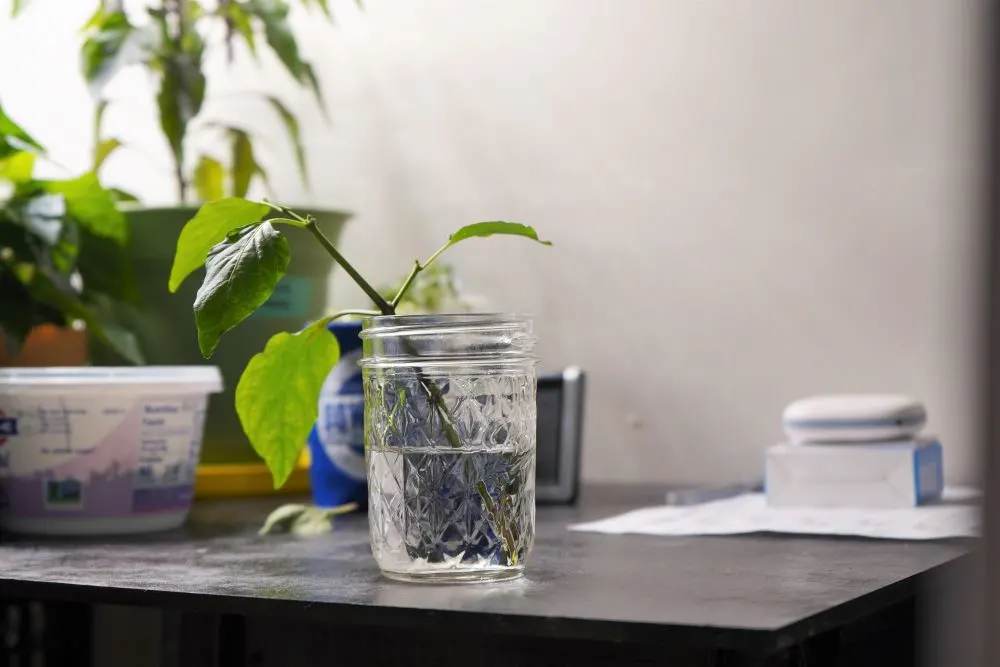
Why Propagate Peppers?
I like the idea of cloning pepper plants for a few reasons, however it is not for everyone. There is nothing wrong with starting new plants from seed each year, as peppers can grow very large when started at the right time.
Pros:
- Identical genetics
- Avoid seed starting
- Alternative to overwintering full plants
- Can go directly to hydroponics
Cons:
- Takes a long time to produce roots (~1-2 months)
- Not always successful
- Requires an actively growing plant
One great reason to try propagating peppers is to move soil-based plants into hydroponics. It is easy to take a small cutting and transfer it directly to a hydroponic system, without any messy soil.
Another possible reason to clone peppers is to avoid overwintering fully grown plants. With propagation, the risk of bringing in pests is greatly reduced, and there is no hassle with cleaning the roots.
Of course, if you are just propagating for the fun of it, that is a great reason, too!
Fun fact: The ‘Aloha’ pepper is a genetically unique plant that is cloned to preserve the striped appearance of its pods.
How To Propagate Pepper Plants
Keep in mind that cloning peppers is not always successful. It can take many weeks for a cutting to produce roots, so be sure to check on them regularly and change out the water as needed.
Tip: Move quickly to avoid the cuttings drying out – have your containers ready so that, once you make a cut, you can move the clones directly to fresh water.
When is the best time to clone pepper plants?
Ideally, you should take your pepper cutting in early summer when the plants are growing rapidly. The cuttings will root more quickly. However, pepper cuttings will root at any time of the year.
Steps:
- Prepare a cup with water.
Start by filling an opaque cup about halfway full with fresh water. Use filtered drinking water and be sure it is cool/room temperature.
- Identify a young branch.
To increase your chances of a successful clone, always choose a branch that is actively growing. Avoid woody, stiff branches. Look towards the top of the plant for a medium sized branch that is still soft and green.
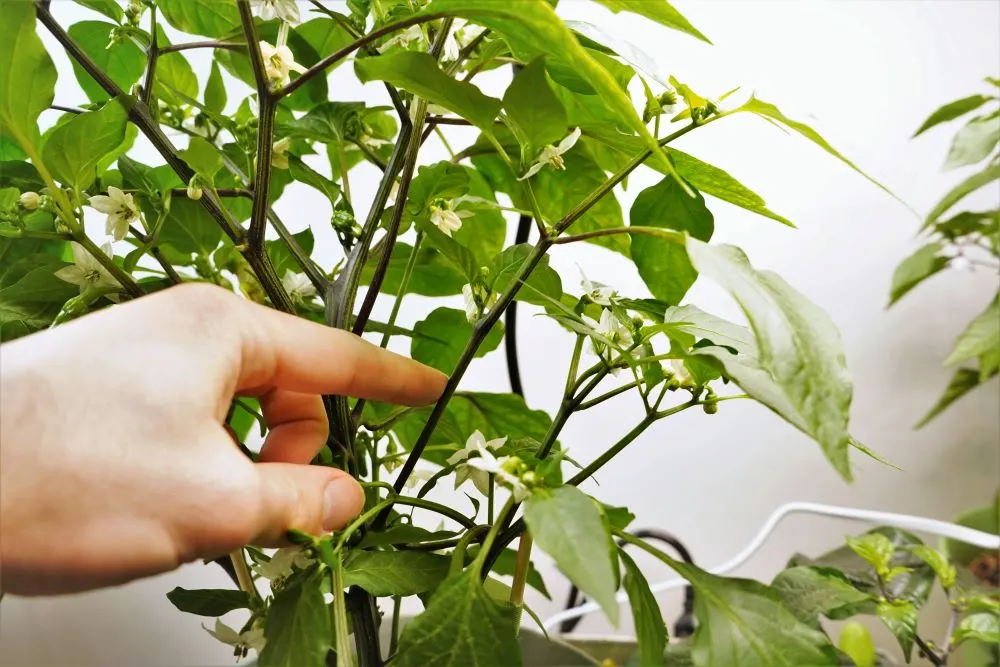
- Make a clean cut at the base.
Using a sharp blade (I like using sewing scissors for their precision), cut the branch at an angle below a node. Leave at least 2-3 nodes on the branch above the cut. Always use a diagonal cut to increase the wound’s surface area. This helps the cutting root more quickly.
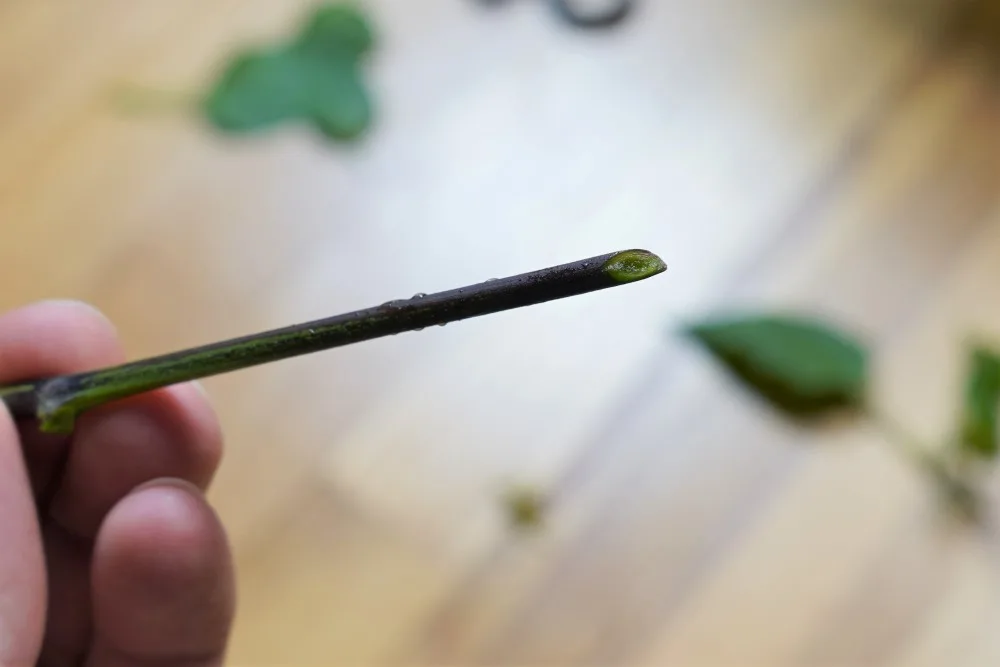
- Remove flowers, fruits & some leaves.
To help it direct energy towards producing roots, remove all flower buds, fruits, and most of the foliage. Leave a few leaves (3-5) per cutting, but remove the rest.
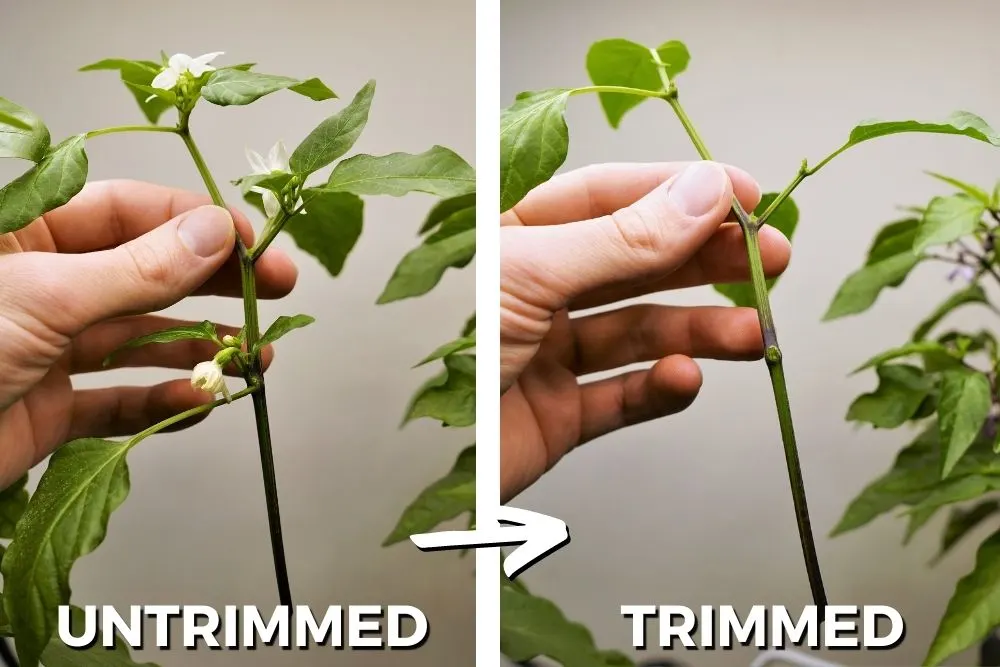
- Submerge cut end in water.
After cutting the branch, move it directly to your prepared cup of water, ensuring at least one node is submerged. Some growers like to use rooting hormone to stimulate the plants to grow roots faster. If you plan to use this, dip the cut end and lower node(s) of your branch in the powder before placing it in water. Some hormones can be dissolved in the water.
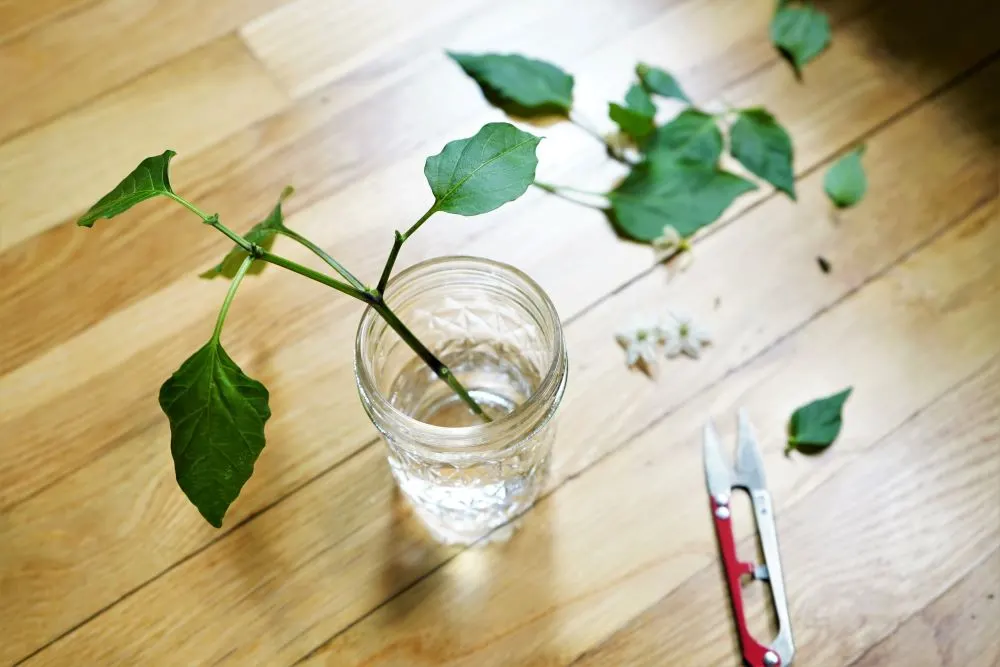
- Keep in indirect light.
Avoid too much direct sunlight or powerful grow lights. Instead, keep the cuttings in a bright room with indirect sunlight (a few feet from a sunny window or grow light works well). Too much light can cause more leafy growth or burned leaves.
- Watch for dried leaves.
During the first few days, keep an eye out for wilting leaves. If you leave too many on the plant, they can become stressed. Remove a few more leaves in this case, but do not remove all the foliage.
- Replace water as necessary.
Over time, the plant will drink the water and some will also evaporate. This can happen pretty quickly if it is dry. I like to replace the water every week or so, or as needed. If you just top off the water, it can be susceptible to mold and algae growth, so replacing it is preferred.
- Once roots form, transplant to soil or hydro.
After a month or so, some cuttings may start to form small roots. Allow them to develop to at least 1-2 inches before moving to a growing medium.
You can easily clone several branches from the same plant, as long as they are healthy, actively-growing branches. Keep in mind that some pepper varieties will root much more quickly than others. It comes down to that individual plant’s physiology.
Growing Pepper Cuttings
Once you have successfully rooted your plant cuttings, you can plant them into normal potting soil, or into a hydroponic system. Gently spread the roots into loose potting soil and water thoroughly.
Place the pepper cutting under grow lights to promote healthy root development in the soil. Soon enough your pepper will be growing into a full blow plant!
Propagation tips:
- Always submerge at least 1 node. Whether you are cloning in water or a soilless media, make sure to submerge at least 1 of the lower nodes of your cutting. The nodes are where the most vigorous root growth will occur.
- Take multiple cuttings. To ensure the success of your propagated pepper, take multiple cuttings. Cloning peppers is not always successful, so having multiply cuttings will avoid wasted effort.
- Choose branches that have several nodes. Nodes are points on the branch where new branches can form once the new cutting is established. Without enough nodes, the cutting may fail to form new leaves, or grow more slowly.
- Try rooting hormone. If you want faster root development, add rooting hormone to the water. This is a plant hormone that “tells” the plant to form roots, rather than leaves or flowers.
- Cover jar with aluminum foil. To avoid unwanted algae growth in the water, cover your jar with foil or a koozie to block out light.
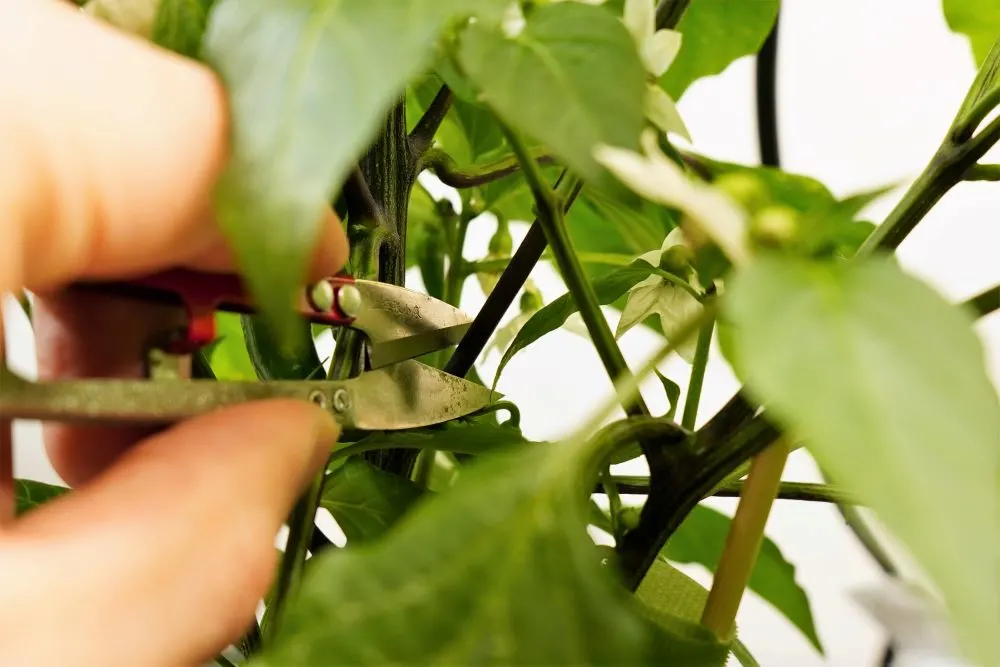
Congratulations! Propagating peppers can be a fun winter project, or just a way to clone your favorite variety into several more plants. If you have any tips on growing pepper cuttings, feel free to share them below.


Francis
Tuesday 14th of November 2023
I grew pepper from cutting I tried with younger branches but they wilted easily This time I tried with a harder stem that's still green and I planted immediately to my grow bag and the cutting has rooted
Sandra
Wednesday 8th of November 2023
Thank you!!!
Jo
Wednesday 6th of September 2023
Great article, thanks. I have a question; I got some great green (long) peppers from Almeria and just literally planted the seeds and prayed. I have 6 plants and the flowers are coming out and the first pepper is growing. Is not a good time to take a cutting or do I have to wait until the crop is finished? I'm a complete novice at this and would really like to get some more plants. Thanks in advance.
Mary B,
Monday 17th of April 2023
Thanks for the information. Will hybrid pepper plants propagate and produce fruit as well?
peppergeek
Wednesday 26th of April 2023
Yes you can propagate hybrids. This is how commercial growers keep the same genetic traits in specialty varieties (like the 'Aloha' pepper).
Abdoulie M Faal.
Monday 6th of March 2023
Thanks very much for the information will try to night as I cut them already though I already put them in water.